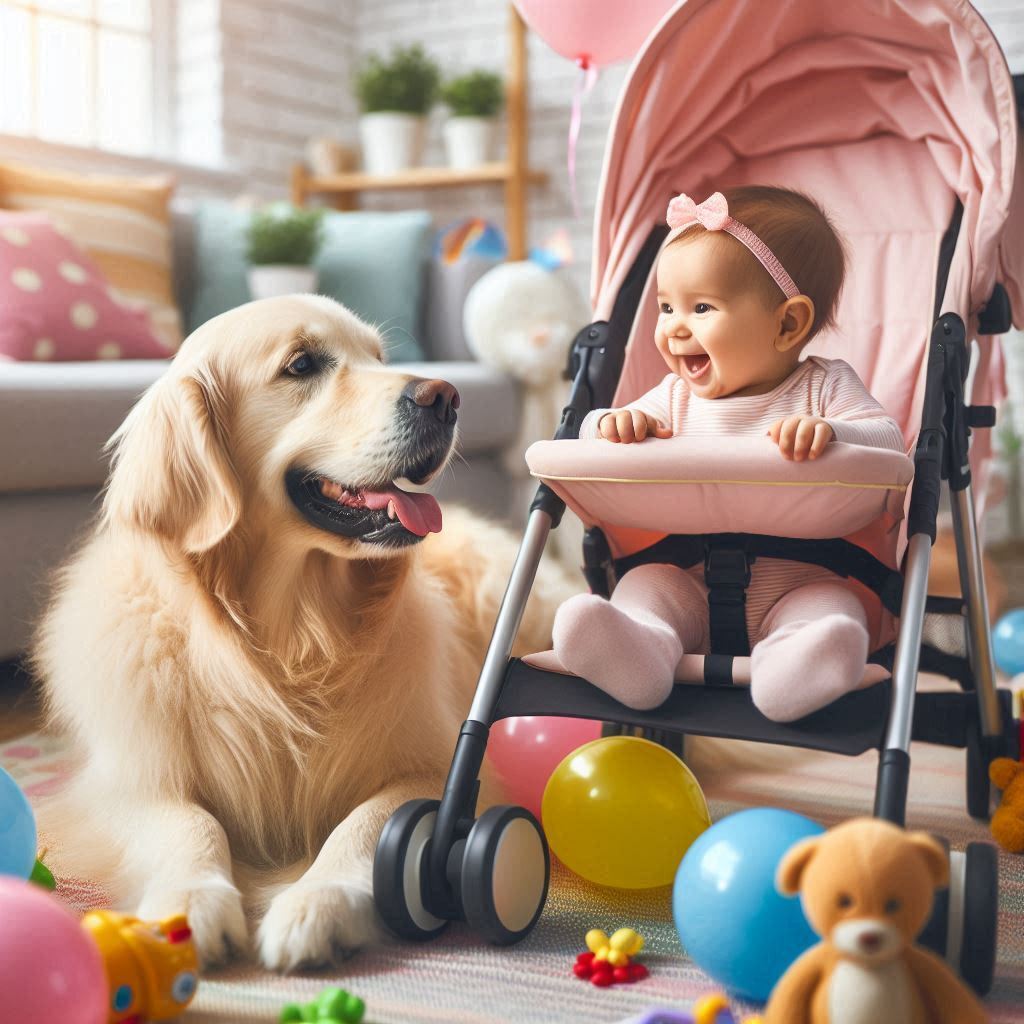Bringing a baby into a home with a dog can be a joyful yet challenging experience. While many dogs adapt well to the new family member, it’s essential to consider various factors to ensure a safe and harmonious environment for both your dog and your baby. Here’s a comprehensive guide to help you assess and prepare for this significant transition.

Factors Influencing How Your Dog Might React
- Dog’s Breed and Temperament: Different dog breeds have varying temperaments, which can influence how they react to a baby. Breeds known for their gentle and patient nature, such as Golden Retrievers or Labrador Retrievers, are generally more adaptable to the presence of children. In contrast, breeds with higher energy levels or stronger prey drives might require more careful management around a baby.
- Prior Experience with Children: Dogs that have been socialized around children from a young age are typically more comfortable with babies. If your dog has had positive interactions with children in the past, they are more likely to adjust well to your new baby.
- Age of Your Dog: The age of your dog can significantly impact their behavior around a baby. Puppies, with their boundless energy and clumsiness, might be overwhelming and potentially hazardous to a baby. On the other hand, mature dogs are usually calmer and easier to manage, making them better suited for the presence of a little one.
- History of Aggression: If your dog has a history of aggression towards people or animals, it’s crucial to address this issue before introducing them to your baby. Consulting a professional trainer or behaviorist is essential to ensure the safety of everyone involved.
Preparing Your Dog for the Baby’s Arrival
- Gradual Introduction: Before the baby comes home, familiarize your dog with the baby’s scent by allowing them to sniff articles of clothing or blankets used by the baby. This helps your dog become accustomed to the new smell, making the eventual introduction smoother.
- Practice Makes Perfect: If you have friends with babies, arrange supervised interactions to gauge your dog’s reaction. This practice can provide valuable insights into how your dog might behave around your baby and allow you to make necessary adjustments.
- Maintain Routine: Dogs thrive on routine. To minimize disruption, try to maintain your dog’s regular walking, feeding, and playtime schedules. A consistent routine can help reduce stress and anxiety for your dog during this transitional period.
- Provide Attention and Exercise: Ensure your dog continues to receive plenty of love, attention, and exercise. This helps prevent feelings of jealousy or neglect, which can arise when a new baby demands much of your time and energy.
Signs Your Dog Might Need Extra Support
It’s essential to monitor your dog’s behavior for signs of stress or discomfort. Here are some indicators that your dog might need additional support:
- Stiff Posture, Flattened Ears, or Tucked Tail: These signs often indicate fear or anxiety.
- Excessive Barking or Growling: Vocalizations can be a warning sign of fear or aggression.
- Staring Intently: While staring can be a sign of curiosity, unwavering focus might indicate a potential threat assessment.
Safety First
No matter how calm and well-behaved your dog seems, never leave them unsupervised with your baby. Supervision is crucial to ensure the safety of both your baby and your dog.
By taking proactive steps to prepare your dog and carefully managing interactions, you can foster a positive and harmonious household where your furry friend and new baby can thrive together. Remember, patience, vigilance, and professional guidance are key to a successful introduction.
